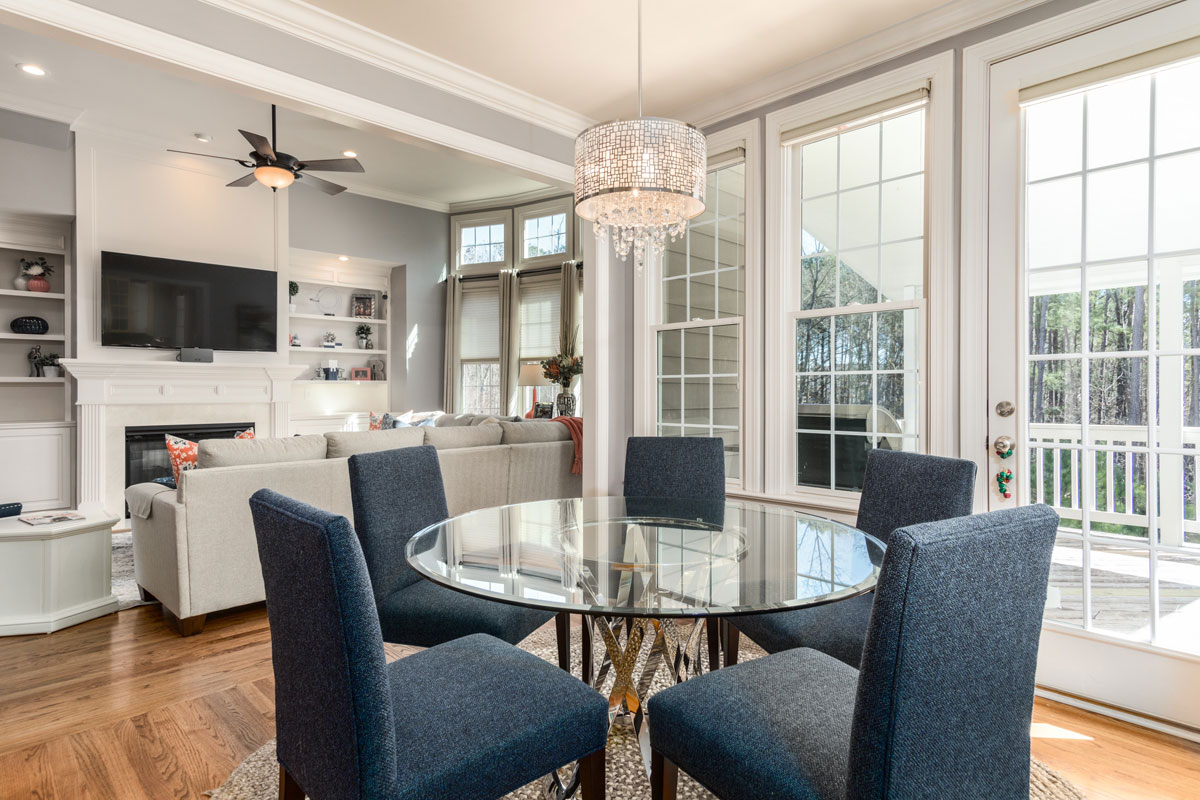

We work hard for our homes and understandably want them to look as nice as possible. Comfort is also really important. What good is it to have a nice looking house that's uncomfortable? Not much. With that being said, windows are a major focal point of a home, and make the home look really nice by letting in light and optimizing views. Unfortunately, according to the Department of Energy, "in cooling seasons, about 76% of sunlight that falls on a standard dual pane window enters to become heat." Glass lets the sun's radiation pass through and the heat gets rapped inside your home. Just like a parked car in the sun, a room gets really warm, really quick. The trick to cooling your house is to prevent the sunlight from ever passing through your windows at all. There are different ways to reduce heat in homes. Some of which will change the aesthetics of the home, while others will not. Let's learn more!
Common solutions to try and reduce heat from entering your house often include replacing standard window panes with more energy-efficient glass, reinforcing window seams with weatherstripping, installing exterior or interior window shades, and hanging heavy-duty curtains over windows. These are all fine options and will help with reduce heat, but will also change the aesthetics of your house.
Replacing window panes with more energy-efficient glass can help minimize the heat in comparison to the standard glass, but can be very expensive and can be a tedious process. Weather-stripping is another option for reducing heat. When you weather-strip, sliding windows might become loud and heavy and could potentially ruin the look of your windows. Both of these options will not help block the radiation from entering your home to begin with.

Exterior window shades are a very common way to reduce heat in a home. They will absolutely help block heat, and are super easy to use. They are easy to maintain and keep a clean look from the exterior of the home. On the down side, exterior window shades can leave marks on your walls, need to be adjusted pretty frequently, can deteriorate from the sun over time, and might not completely cover your window and shade your room the way you would like. Reflections from other surfaces can still enter around the shades and contribute to heat build up and that pesky AC bill. Ultimately, exterior window shades just like anything else, have their pros and cons.

Just like exterior window shades, interior window shades are a common solution to reducing heat in a home. Very similar pros and cons to exterior window shades, interior window shades will add another layer of bulk around your windows that you might not even want. They often come with ugly cords that can tangle or even pose a danger to children and pets. Not to mention, curtains negate the whole reason why we want windows: mood-boosting natural light and views.

A fourth option to reducing heat that isn't too well known is solar film. Solar film is easily installed, removed, and replaced. Solar film comes in a variety of different shades and tint and complements your home’s look. Solar film is considered a “bulk-free” option that won’t damage the glass surface it is installed to. Window film can be applied to hard-to-reach windows and cover the entire window, without ever needing any adjustment. Most importantly, solar film lets in natural light and maintains views without the uncomfortable heat.
These Stories on Residential
American Window Film is excited to announce another acquisition with New York Window Film!
Read this postSolar Art Film is excited to announce another acquisition with American Window Film!
Read this postShould I tint my home windows in the winter with residential window film?
Read this postCorporate Location: 23042 Mill Creek Drive, Laguna Hills, CA 92653
Copyright 2025 - American Window Film | All Rights Reserved | Contractor's License #1054307
No Comments Yet
Let us know what you think